A walkabout on Large Feather Island
The Feather Islands are part of an islet group about 30 minutes by boat from Stockholm's Old Town.
-
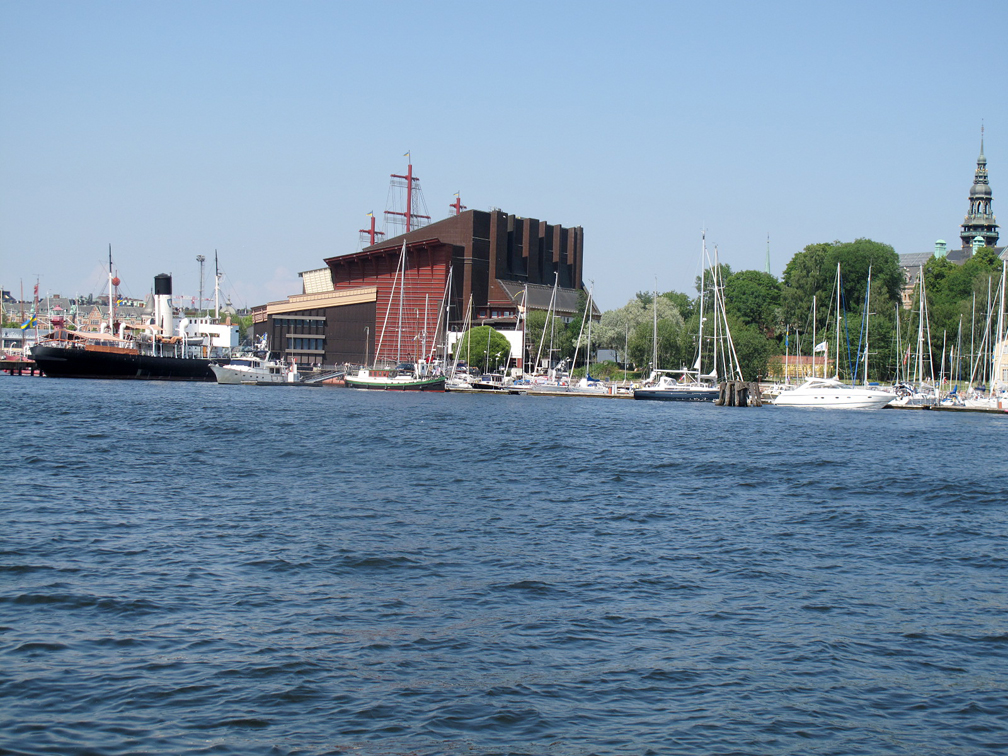 A view of Vasa Museum on the way to Fjäderholmarna.
A view of Vasa Museum on the way to Fjäderholmarna. -
-
Large Feather Island (Stora Fjäderholmen), according to a map from 1811, is part of an islet group 30 minutes from Old Town (Gamla Stan), Stockholm. In 1849 Stockholm bought the Feather Islands to use for the disposal of solid waste that was left at Ängsholmen. Steamboat passengers and Lidingö dwellers complained about the stench, however, and sewage disposal ceased in the 1880s. According to the 1862 population register for Lidingö, 30 people lived on the Feather Islands, most probably on Large Feather Island. Among them were a cooper, a carpenter, a journeyman and four laborers.
The first house was built circa 1700 on the large island, where all the island residents could be included in the group called “Rospiggar.” A Rospigg is a special kind of spirited person from the Roslagen archipelago — the name originates from the old Swedish word "rosbyggiar," inhabitant in Roden (the historic coastal area in Uppland). It thus has nothing to do with the word "pigg" which is the Swedish word for a spirited person. -
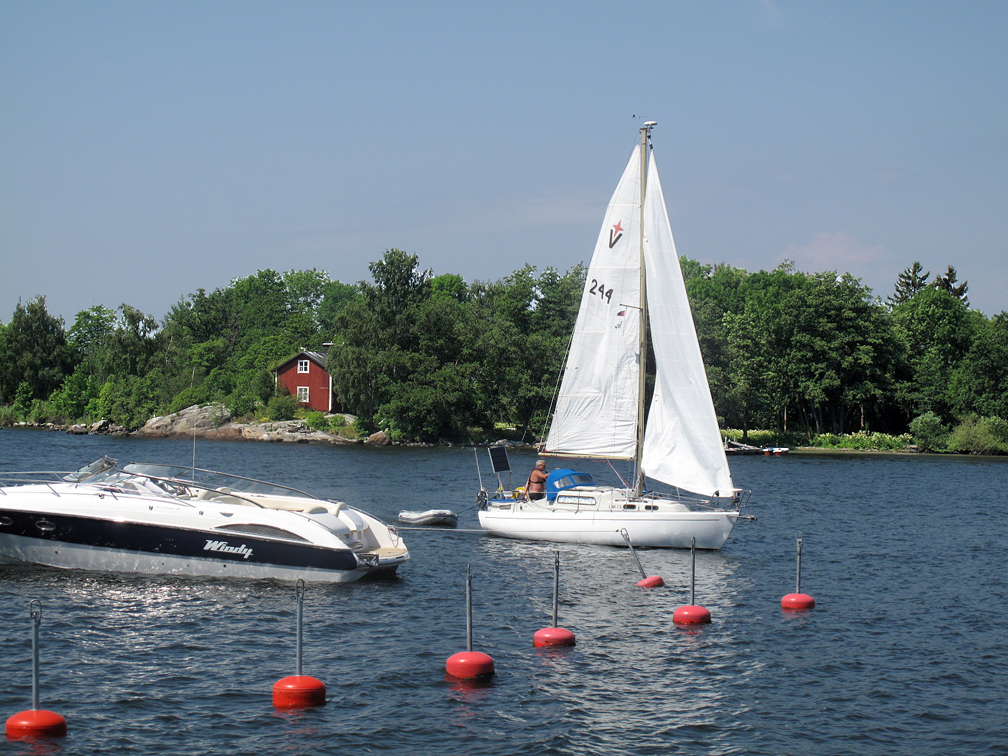 A stunning view from the restaurant into the traffic in the opening between the islands
A stunning view from the restaurant into the traffic in the opening between the islands -
-
Cleanliness was an issue for a rospigg, according to the Swedish author Albert Engström: “In each house there should be a female person, keeping dirt out, or else we men would sink into a misery of uncleanliness. A Rospigg in the archipelago does not wash himself; he becomes temporarily clean when he by accident occasionally falls into the water, or if an angry fizzling wife turns a pan with ice-cold well water over him, while sleeping his intoxication off. Yes, it is a misery.” (Interpreted by this author) Rospigg is also an alternative name for the "Roslagsskuta,” a reliable ship used for many tasks required on the islets.
In the late 1800s the southern tip of Large Feather Island held an observation tower, which was later converted into a restaurant and named "Grand Restaurant Bellevue.” The restaurant was demolished when the Navy took over the entire island group in 1918, and a facility for final assembly and storage of ammunition was built. They also blew out a number of caverns on the island. -
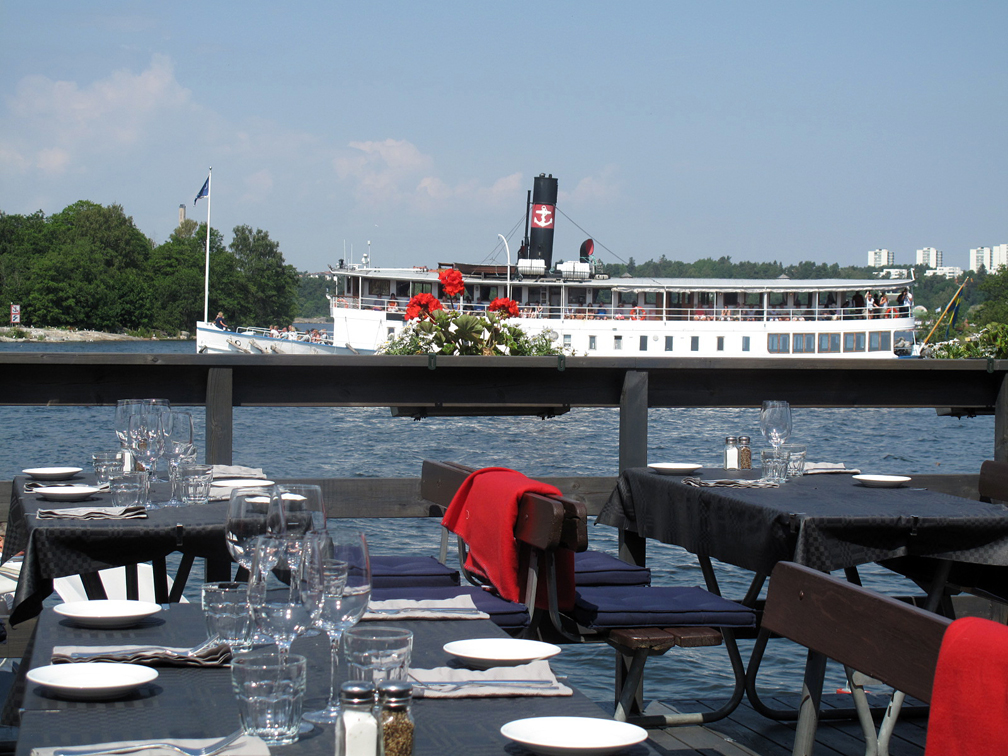 A stunning view from the restaurant into the traffic in the opening between the islands
A stunning view from the restaurant into the traffic in the opening between the islands -
The vodka war
A famous time in the islands’ history is the so-called "vodka war." This happened in Stockholm in the 1870s between the new liquor monopoly, the trade company and “Vodka King" L. O. Smith, with his "ten-fold purified liquor," who had the right to trade in liquor on the Feather Islands because it was outside the city limits. A fee was paid to the Stockholm harbor: one penny for every sold pot (2.6 liters) of liquor that was brought in to Stockholm. Buyers were given free transportation to and from the island. Steamboats arrived twice per hour from Stockholm year-round. It wasn’t until extensive renovation work was done in the late 1970s and early 1980s, that Large Feather Island could again open with restaurants, cafés, artisans, museums, a marina and more. -
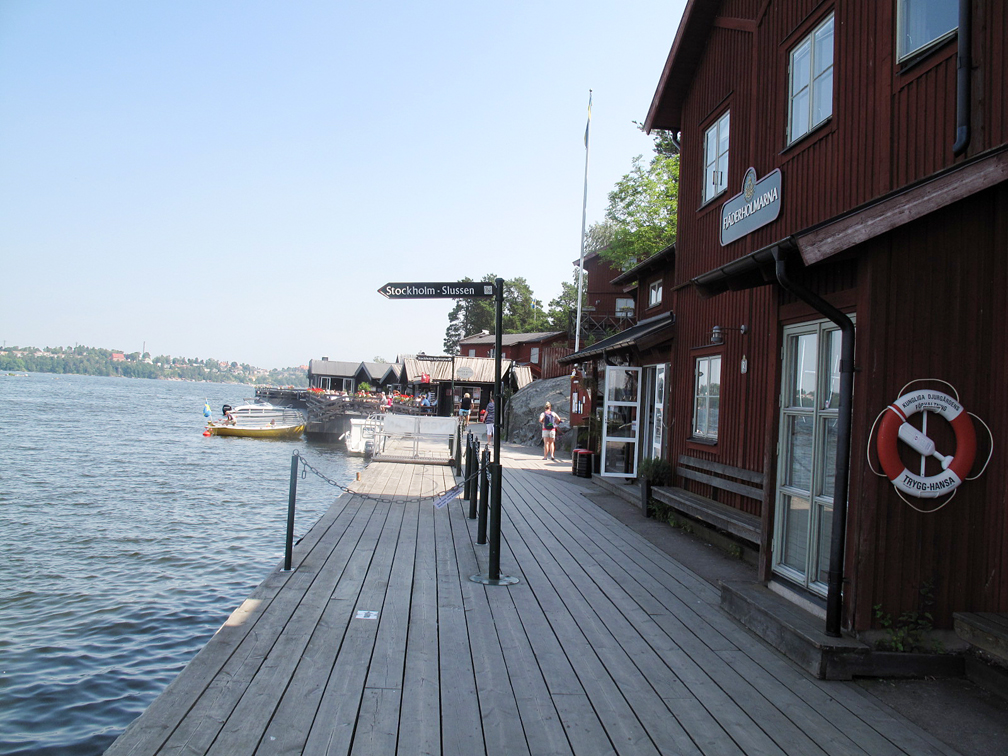 Large Feather Island harbor
Large Feather Island harbor -
Today there are two places where we can buy a ferry ticket to the island for our walkabout: Stockholm's Ström near Gamla Stan and at Nybroviken, both in the city center and with excellent connections to bus and subway. The price for a roundtrip ticket is about SEK 130 ($20) and the trip will take 30 minutes.
-
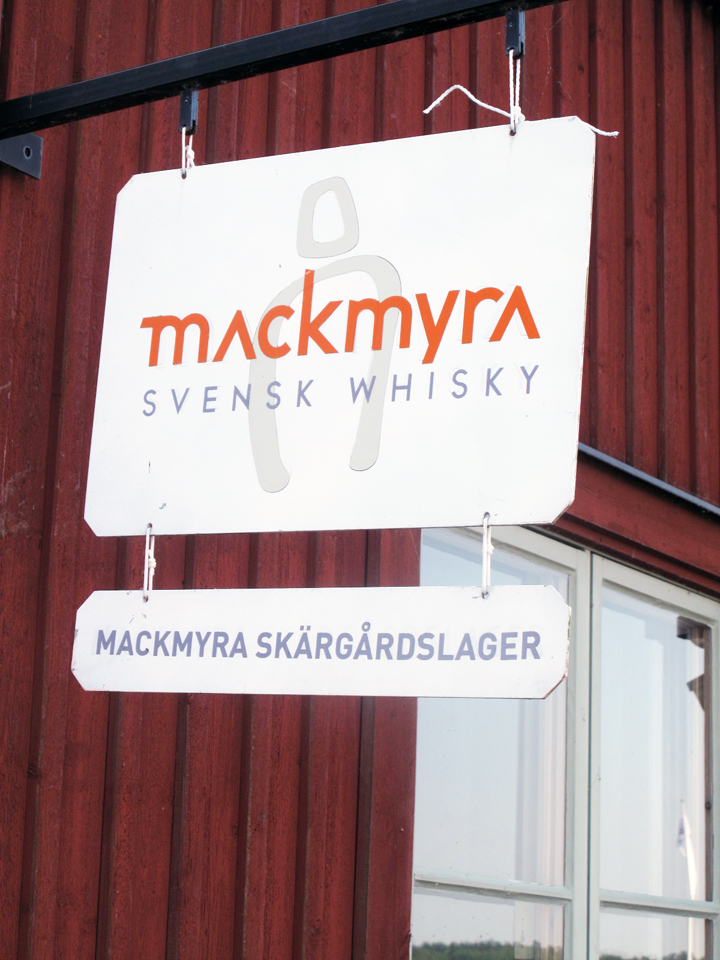 Mackmyra Swedish Whiskey Archipelago Warehouse
Mackmyra Swedish Whiskey Archipelago Warehouse -
I take the ferry from Nybroviken, Kajplats no. 12 and pass many interesting places, like the Vasa Ship Museum, the Stockholm skyline with Katarina Kyrka, and The Rainbow Lord by sculptor Carl Milles at Nacka Strand halfway to the island.
-
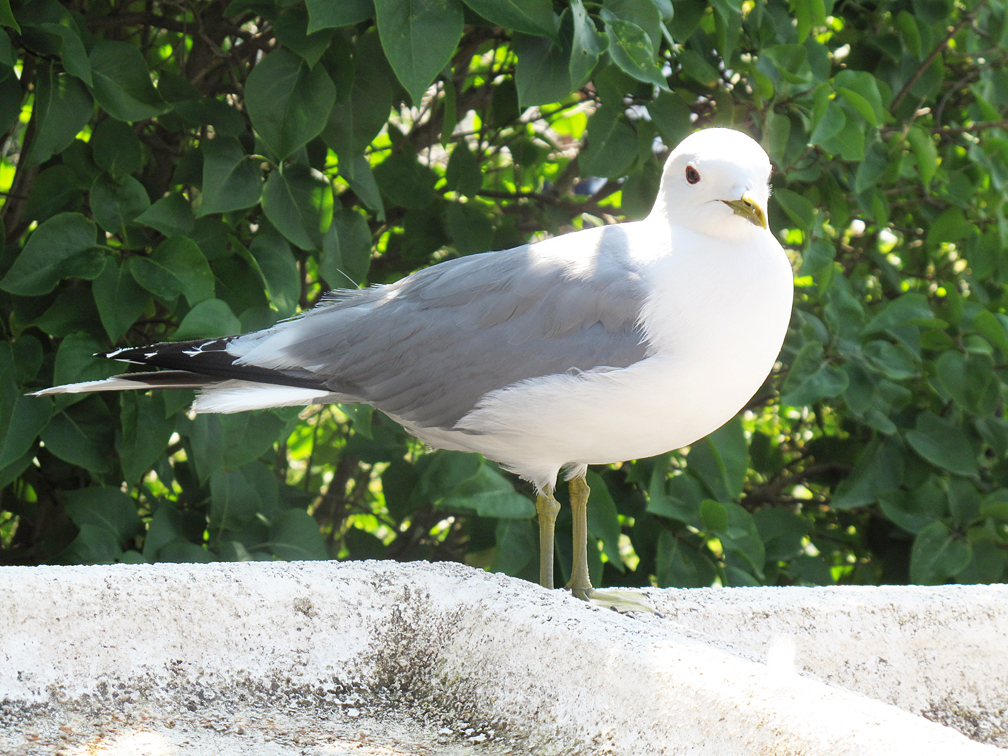
-
Arriving at Fjäderholmarna
We arrive at Large Feather Island harbor and see several advertisements about artisans, craftsmen and their shops, museum activities, restaurants and much more that will satisfy our expectations for a day of fun. The first sign is for Mackmyra Svensk Whisky, that keeps an archipelago warehouse for their whiskey in some of the old navy caverns on the island. -
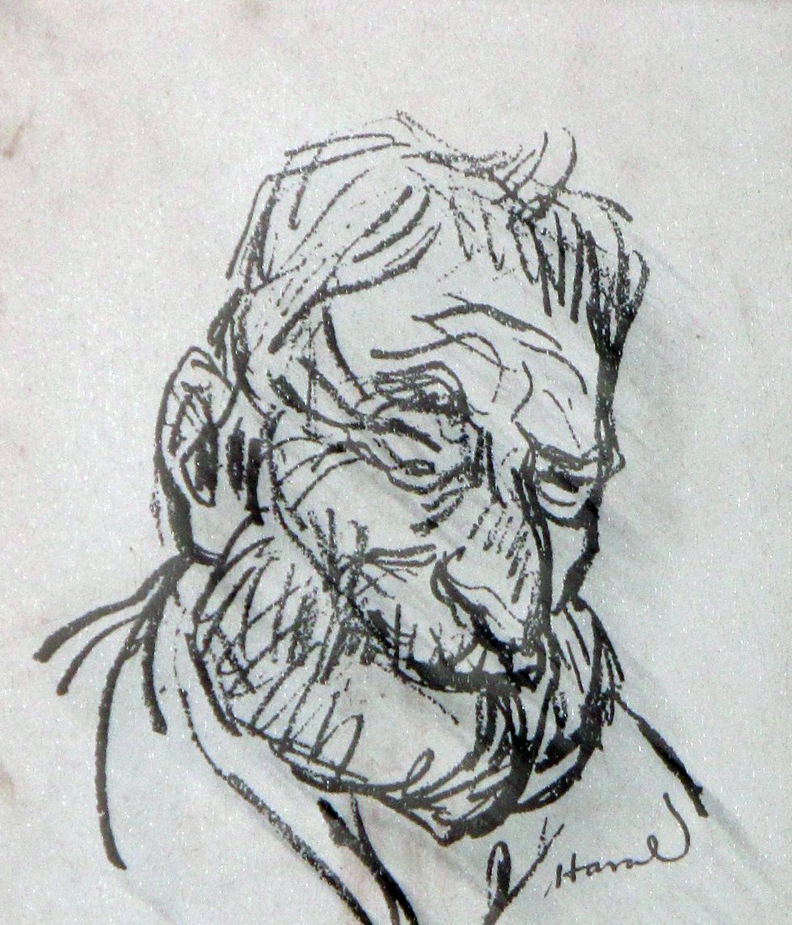 My absolute favorite people “Rospiggar”
My absolute favorite people “Rospiggar” -
We continue our walk following the small road toward “The Smokery” restaurant where we stop for a wonderful lunch with fresh fish from the area combined with a stunning view of the open waters between the islands.
-
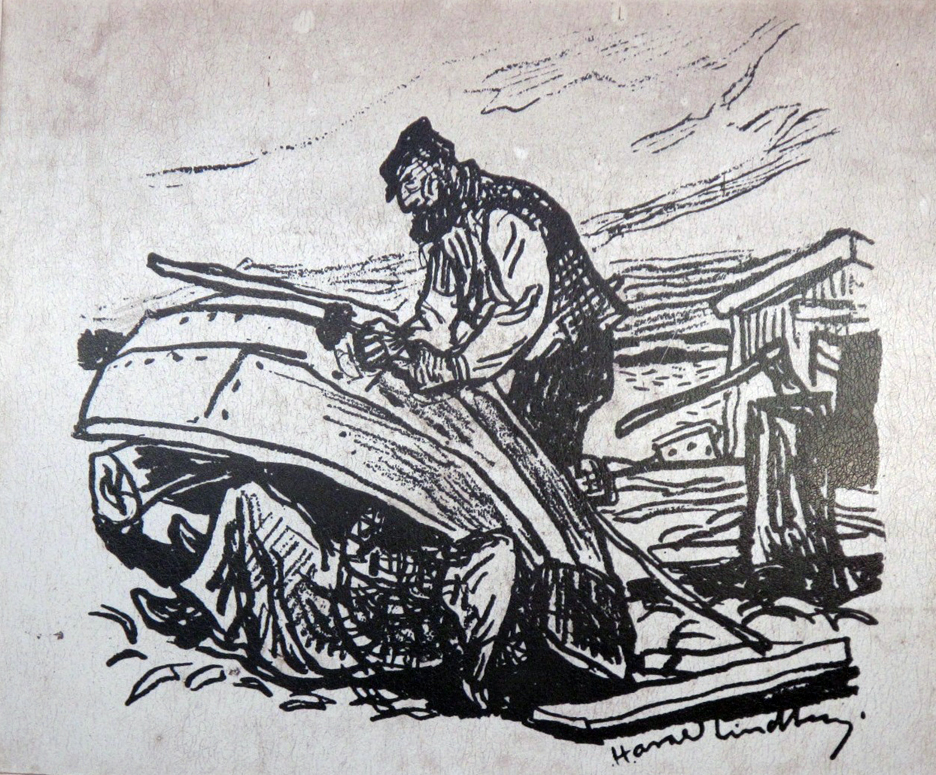 Rospiggar working on their boat
Rospiggar working on their boat -
After lunch we continue to walk along the small road and soon we are at the Feather Island Inn, a beautiful inn by the water. We take a short tour around the inn and then continue forward to the Feather Island Museum where there is a very nice gallery with drawings of people and boats by artist Harald Lindberg. It is also home to “Allmogebåtar,” a very special kind of boat used by the people in the archipelago.
-
 Roslagsskuta for Firewood Transportation
Roslagsskuta for Firewood Transportation -
Many interesting and funny stories are told by the locals about the “Rospiggar” who live in the Roslagen archipelago. The funniest ones are told by the author Albert Engström, in his book Sandöhistorier. "Rospiggen had sailed two tubs out and two tubs in, but he beached anyway." Tubs? Well, long ago peasant skippers never had a log or hour glass. They used wooden tubs filled with a defined quantity of water and with an outlet through a quill. They didn’t have any watches, and sailed by one or two or three tubs, as they called it, and then estimated time and distance using this primitive method.
-
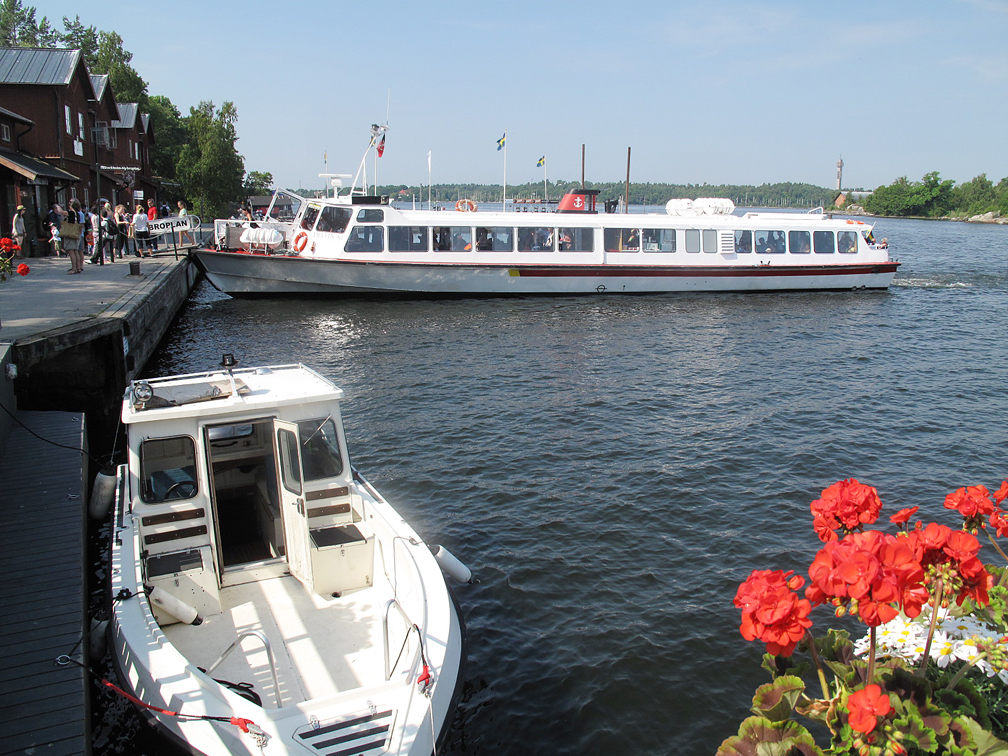 Ferryboat back to Stockholm City
Ferryboat back to Stockholm City -
The Baltic archipelago is filled with small skerries. Many of them you don’t see, so beaching oneself is not that uncommon. While we are laughing and talking about the “tubs” I feel we are closely observed and stared at by a seagull nearby, and I wonder whether he understands what we’re laughing about.
-
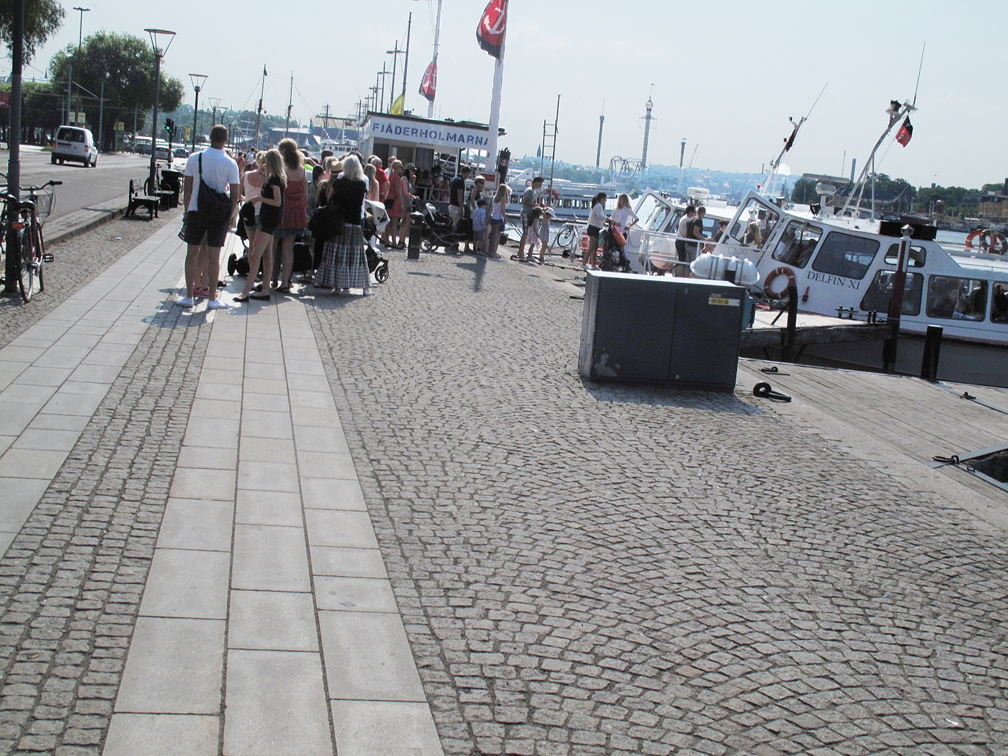 Ferry boat from Nybrokajen, Kajplats #1
Ferry boat from Nybrokajen, Kajplats #1 -
A little further down the road we approach the craftsmen shops on the island. We decide the glass blower and smithy shops are worth a visit.
-
We continue to the eastern side of the island and see several people swimming, even though I think the water is probably a bit cold. We also see a lot of sun worshippers on the cliffs. Soon we reach the northern part of the island where the Red Cottage (Röda Villan) is, which offers us a variety of sandwiches and more.
-
After another five minutes of walking we are back to the beginning of our Feather Island walkabout, ready to take the ferry back to Nybrokajen in Stockholm.
-
Written by Leif Rosqvist, editor of the Newsletters of New Sweden Cultural Heritage Society and SRIO in Portland, Oregon.
-
For more information visit:
www.fjaderholmarna.se/english
Google Fjäderholmarna to get information in English
Google Fjäderholmarna-Marinen for Marine history
Search for Stockholm-Fjäderholmarna at youtube.com Albert Engström: Sandöhistorier (Adel, präster, smugglare, bönder), Läsebok för svenska folket. (in Swedish) -
CAPTIONS:
Rospiggar
Roslagsskuta for Firewood Transportation -
L O Smith, the Vodka King
-
Ferry boat from Stockholm Ström kajen
-
Ferry boat from Nybrokajen, Kajplats #1
-
Large Feather Island harbor
-
Mackmyra Swedish Whiskey Archipelago Warehouse
-
A stunning view from the restaurant into the traffic in the opening between the islands
-
Feather Island Inn
-
Allmogebåt
-
Rospigg
-
Rospiggar working on their boat
-
Allmogebåt tacking at Feather Island
-
What are you looking at?
-
Red Cottage (Röda Villan) restaurant
-
Ferryboat back to Stockholm City
-
My absolute favorite people “Rospiggar”
-
-
